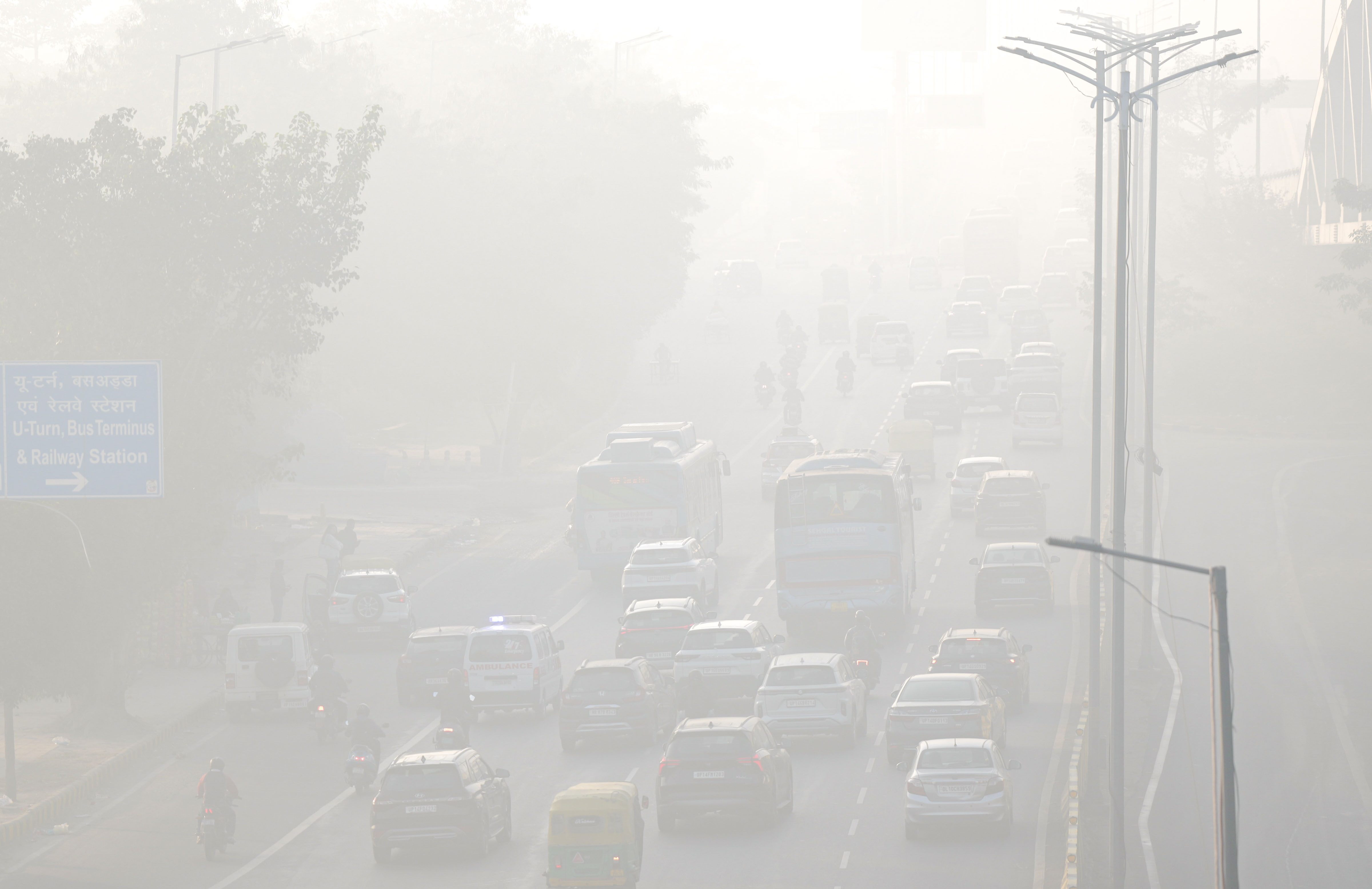Air quality concerns linger in the wake of steel plant explosion in Pennsylvania – ABC News

Industrial Accident at U.S. Steel Plant Highlights Deficiencies in Sustainable Development Goals
Incident Summary: A Failure in Ensuring Good Health and Decent Work (SDG 3 & SDG 8)
An explosion at the U.S. Steel Clairton Coke Works in Allegheny County, Pennsylvania, resulted in a significant failure to uphold key tenets of the Sustainable Development Goals, particularly those concerning worker safety and community health. The incident directly contravenes SDG 8 (Decent Work and Economic Growth), which calls for safe and secure working environments, and SDG 3 (Good Health and Well-being).
- Fatalities: Two workers, identified as Timothy Quinn, 39, and Steven Menefee, 52, were killed.
- Injuries: More than 10 other individuals were injured in the blast.
This event underscores a critical lapse in occupational safety protocols, directly impacting the well-being of employees and their families.
Environmental Impact and Community Response: A Challenge to Sustainable Cities (SDG 11 & SDG 3)
Enhanced Air Quality Monitoring
In response to the explosion and the plant’s troubled environmental history, the Allegheny County Health Department has initiated enhanced air quality monitoring. This action aligns with the objectives of SDG 11 (Sustainable Cities and Communities) to reduce the adverse per capita environmental impact of cities, including by paying special attention to air quality. Mobile air units are being deployed to assess the Mon Valley for several pollutants critical to public health.
- Volatile organic compounds (VOCs)
- PM2.5 pollutants
- Sulfur dioxide (SO2)
While an initial shelter-in-place advisory was lifted, the ongoing investigation and enhanced monitoring reflect persistent concerns about the plant’s impact on community health, a core component of SDG 3.
Systemic Failures in Industrial Responsibility and Governance (SDG 9, SDG 12, & SDG 16)
A History of Environmental Non-Compliance
The Clairton Coke Works, the largest coking operation in North America, has a documented history of environmental issues that conflict with SDG 12 (Responsible Consumption and Production) and SDG 9 (Industry, Innovation, and Infrastructure). These goals advocate for environmentally sound management of chemicals and wastes and the adoption of clean technologies and industrial processes.
- 2018 Fire: A fire damaged pollution-control equipment, leading to repeated releases of sulfur dioxide and significant health impacts on the community, including increased asthma-related medical treatments. A subsequent lawsuit was settled with U.S. Steel committing $19.5 million to equipment upgrades and $5 million to local clean air initiatives.
- 2019 Lawsuit: The company settled a separate lawsuit regarding air pollution for $8.5 million.
Regulatory Gaps and Institutional Weakness
The incident also brings to light challenges related to SDG 16 (Peace, Justice, and Strong Institutions). The move by the Environmental Protection Agency (EPA) to postpone new hazardous air pollution standards for coke plants is seen by public health advocates as a weakening of institutional oversight. Advocacy groups note that proposed regulations, such as mandatory fence-line monitoring for hazardous pollutants, would provide critical data for protecting public health during industrial accidents. The absence of such strong, accountable, and transparent institutions places a greater burden on communities and undermines progress toward sustainable industrial practices.
Analysis of Sustainable Development Goals in the Article
1. Which SDGs are addressed or connected to the issues highlighted in the article?
-
SDG 3: Good Health and Well-being
This goal is central to the article, which details the direct health impacts of an industrial accident and ongoing pollution. The explosion resulted in fatalities and injuries, and the plant’s history of air pollution is linked to respiratory issues like asthma in the local community.
-
SDG 8: Decent Work and Economic Growth
The article addresses this goal through the lens of occupational health and safety. The death of two workers and injury to more than ten others in the plant explosion highlights a failure to ensure a safe and secure working environment, a key aspect of decent work.
-
SDG 9: Industry, Innovation, and Infrastructure
The focus on the Clairton Coke Works, a major industrial facility, connects directly to this SDG. The article discusses its “troubled environmental record,” the need for equipment upgrades as part of a legal settlement, and the failure of existing infrastructure to prevent a fatal explosion, pointing to the need for more resilient, clean, and sustainable industrial processes.
-
SDG 11: Sustainable Cities and Communities
The impact of the plant’s operations on the surrounding Mon Valley community is a primary theme. The article mentions air pollution “fouling the air in communities,” a shelter-in-place advisory for residents, and the general degradation of local environmental quality, which are all relevant to making communities safe, resilient, and sustainable.
-
SDG 16: Peace, Justice, and Strong Institutions
This goal is relevant through the discussion of regulatory bodies and legal actions. The article mentions the roles of the Allegheny County Health Department and the federal Environmental Protection Agency (EPA), as well as lawsuits and settlements. The EPA’s move to postpone new standards and the call for better monitoring highlight the need for effective, accountable, and transparent institutions to enforce environmental and safety laws.
2. What specific targets under those SDGs can be identified based on the article’s content?
-
Target 3.9: Substantially reduce deaths and illnesses from hazardous chemicals and air pollution.
The article directly relates to this target by reporting on the deaths of two people and injuries to others from the explosion. It also links the plant’s air pollution (sulfur dioxide, PM2.5) to negative health outcomes, such as a study that “found twice as many patients sought medical treatment” for asthma after a previous pollution event.
-
Target 8.8: Protect labor rights and promote safe and secure working environments.
The fatal explosion at the U.S. Steel plant, which “killed two people and injured more than 10 others,” is a direct failure to meet this target of ensuring worker safety.
-
Target 9.4: Upgrade infrastructure and retrofit industries to make them sustainable.
The plant’s “troubled environmental record” and a previous settlement that required U.S. Steel “to spend $19.5 million in equipment upgrades” explicitly point to the need for retrofitting industry to be more environmentally sound and safer, which is the core of this target.
-
Target 11.6: Reduce the adverse per capita environmental impact of cities, including by paying special attention to air quality.
The entire article is framed around the issue of air quality in the Mon Valley. The county’s deployment of “mobile air units” to assess for pollutants like “volatile organic compounds, PM2.5 pollutants and sulfur dioxide” is a direct response to the adverse environmental impact on the community.
-
Target 16.6: Develop effective, accountable and transparent institutions at all levels.
The article discusses the actions of the county health department, lawsuits against U.S. Steel, and the EPA’s decision to “postpone new hazardous air pollution standards for coke plants.” These events highlight the ongoing struggle to develop and maintain effective institutional oversight for public and environmental health.
3. Are there any indicators mentioned or implied in the article that can be used to measure progress towards the identified targets?
-
Indicators for Target 3.9 & 8.8:
The article provides direct data points that can be used as indicators: the number of fatalities (2) and injuries (>10) from the industrial accident. This aligns with Indicator 8.8.1 (Fatal and non-fatal occupational injury rates) and serves as a measure for Indicator 3.9.1 (Mortality rate attributed to… ambient air pollution), as the explosion released pollutants.
-
Indicator for Target 11.6:
The article explicitly mentions the measurement of specific pollutants. The plan to “assess parts of the valley for different types of pollutants such as volatile organic compounds, PM2.5 pollutants and sulfur dioxide” directly relates to Indicator 11.6.2 (Annual mean levels of fine particulate matter (e.g. PM2.5) in cities). The lifting of an advisory after monitors “didn’t detect levels of soot or sulfur dioxide above federal standards” also implies the use of these measurements as indicators.
-
Implied Indicators for Target 9.4:
Progress can be measured by tracking financial investment in cleaner technology. The article mentions a settlement requiring U.S. Steel “to spend $19.5 million in equipment upgrades and $5 million on local clean air efforts,” which serves as a quantifiable indicator of retrofitting efforts.
-
Implied Indicators for Target 16.6:
The effectiveness of institutions can be measured by the implementation and enforcement of regulations. The article points to a negative indicator: the EPA’s move to “postpone new hazardous air pollution standards,” including a requirement for “fence-line monitoring for hazardous air pollutants,” which an advocate said would have been “incredibly useful” during the explosion.
4. Summary Table of SDGs, Targets, and Indicators
| SDGs | Targets | Indicators Identified in the Article |
|---|---|---|
| SDG 3: Good Health and Well-being | 3.9: Substantially reduce deaths and illnesses from hazardous chemicals and air pollution. |
|
| SDG 8: Decent Work and Economic Growth | 8.8: Protect labor rights and promote safe and secure working environments. |
|
| SDG 9: Industry, Innovation, and Infrastructure | 9.4: Upgrade infrastructure and retrofit industries to make them sustainable. |
|
| SDG 11: Sustainable Cities and Communities | 11.6: Reduce the adverse per capita environmental impact of cities, paying special attention to air quality. |
|
| SDG 16: Peace, Justice, and Strong Institutions | 16.6: Develop effective, accountable and transparent institutions at all levels. |
|
Source: abcnews.go.com

What is Your Reaction?
 Like
0
Like
0
 Dislike
0
Dislike
0
 Love
0
Love
0
 Funny
0
Funny
0
 Angry
0
Angry
0
 Sad
0
Sad
0
 Wow
0
Wow
0

















































:focal(1500,1000)/https://media.globalcitizen.org/a6/9a/a69a4720-d8a1-4715-b596-18738d03c05c/rotary_polio_hero_image.jpg?#)






/countries/sri-lanka/photo-credit---dmc-sri-lanka.tmb-1200v.jpg?sfvrsn=dc298bcc_1#)

















